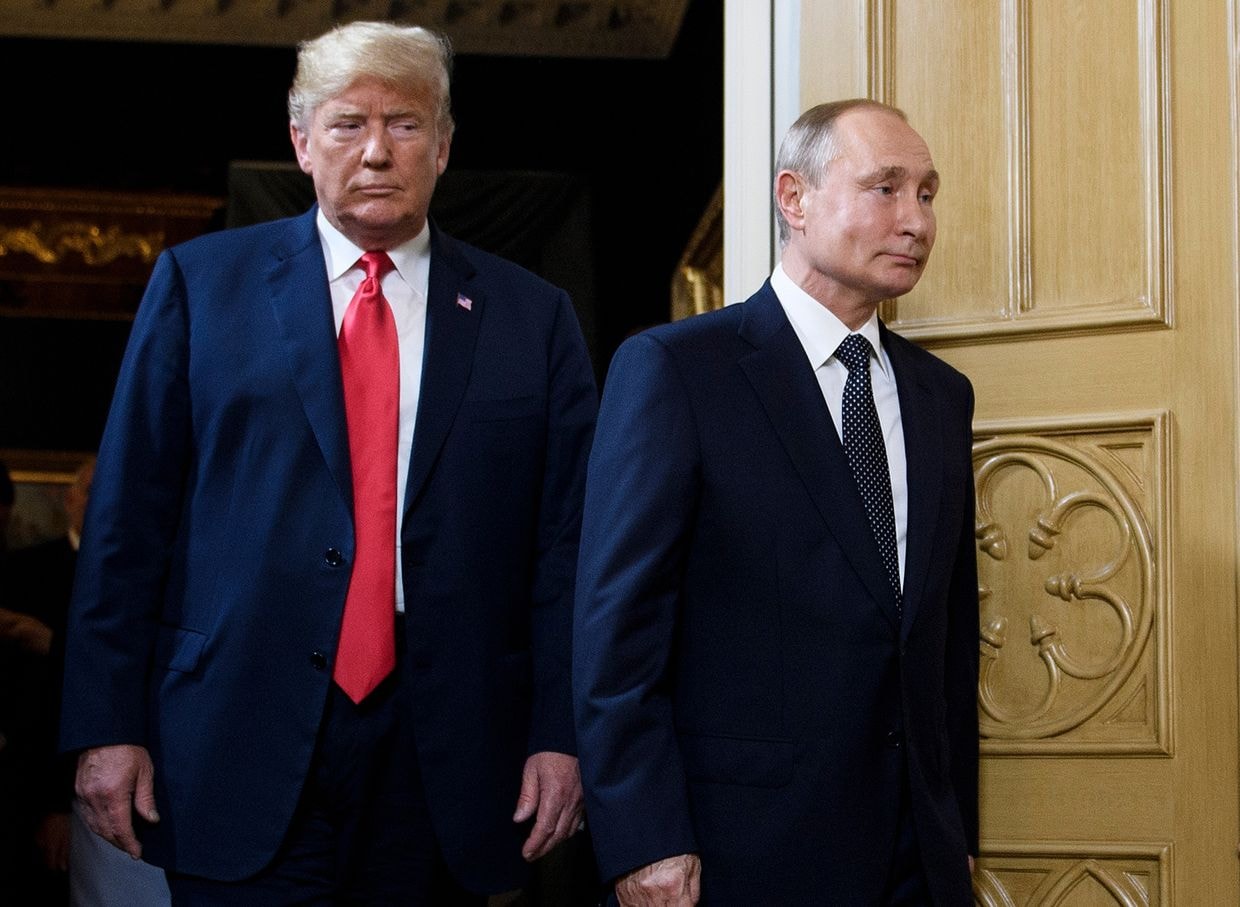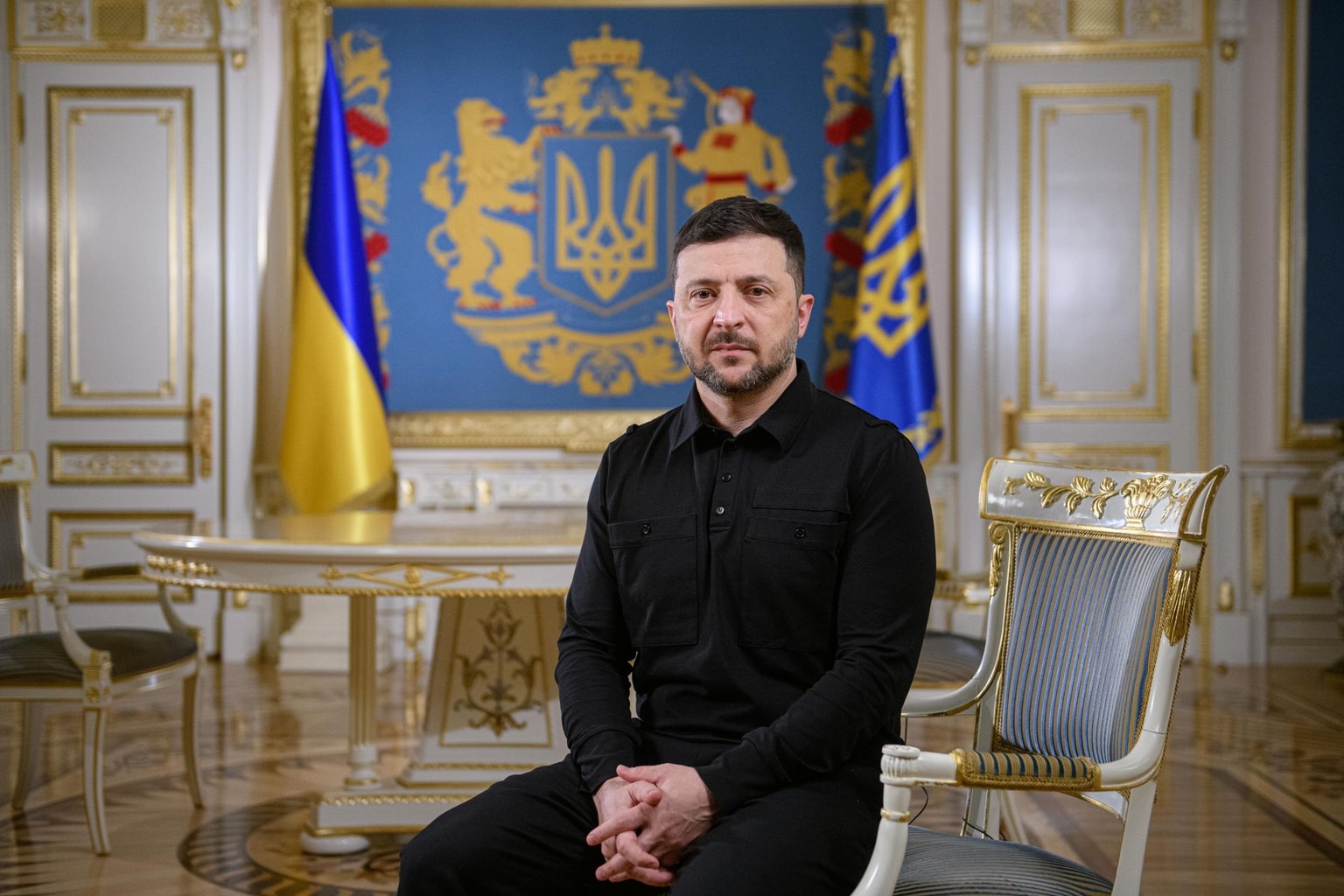
Land on fire: Russia's offensive in Donetsk Oblast brings destruction to new towns (Photos)
Field on fire after shelling near the front-line village of Nova Poltavka, Donetsk Oblast, on July 6, 2024. (George Ivanchenko / The Kyiv Independent)
Since February, Russian forces have steadily advanced across multiple sectors of the front in Donetsk Oblast. They have occupied villages previously liberated by Ukraine, wiped out entire towns, and introduced new threats to the region's overall defense.
Alongside Chasiv Yar, Niu York, and other towns, Russia aims to capture Toretsk, a city that lies in the path of its plan to reach the T0504 highway — a key logistics route for Ukrainian forces. As Russian troops have been getting closer from the east and south over the past weeks, Toretsk has come under increasingly heavy fire from glide bombs, artillery, and drones."

“Almost all front-line towns are destroyed. Toretsk, for example, is 70%-destroyed,” said Donetsk Oblast Governor Vadym Filashkin.
Toretsk had a pre-war population of about 30,000 people. Like with many other cities in the east, most of its residents have fled to the safer areas. About 3,500, however, remain in the city, even as the prospect of Russian occupation is getting dangerously close.
Outside the city, amid fields pocked by craters and shrouded in smoke, Ukrainian soldiers are preparing new defense lines in case the city falls to Kremlin forces, while local farmers attempt to save their grain crops from fires.
Life in the basement
Artur lives in a small basement room in Toretsk. A portrait of Marilyn Monroe hangs on the wall – the space seems well organized and tidy: “I’ve been used to cleanliness since kindergarten,” says the 42-year-old. “I lived with my mom and started cooking when I was 12, and I keep everything in order.” He pulls some dumbbells out from under his bed. “I need to do exercises for my body every morning,” he says.
Artur was born in Toretsk and worked as a miner for 13 years. Since Russian glide bombs started falling on the city, he has been living in a basement, which he rarely leaves. He expects that the city will be destroyed, and the surrounding mines too, but says he won’t leave: “Why should I leave my home? I’ve spent my life in the mines,” he says.


His friends and colleagues have evacuated, and his family has gone: “My mom was sick, there was no heating in winter, so I sent her to Dnipro for free treatment. Then she died. Now I’m alone, I have no one left.”
“I don't believe the radio – I believe only my eyes. This has been going on for 10 years now, and I don't know where it will end.”
In the next basement room, where 73-year-old Tetiana lives with her daughter Oksana and an elderly neighbor, a woman's voice, speaking Russian, is just audible on the radio. ”We listen to anything, just to hear something. I'm grateful to my neighbor because he made a battery-powered radio, otherwise we'd be like moles here. You could go crazy just listening to explosions,” says Tetiana.
Tetiana now takes care of dogs and cats that people left in their apartments when they fled the city.
“I have eight dogs here, and I don't know how many cats,” she says. “I feed as many of them as I can find – I can't even count them. They’re all hungry and dehydrated. I go out to feed them and run into the bushes if there's a drone flying. It's very scary. But what can I do? I feel sorry for the animals too.”
Tetiana previously worked at a sanitary inspector’s office, and her daughter worked in a mine, maintaining flashlights and lanterns for the miners.
“I don't think about anything, I don't want to think about things – I don't want to be sad. We think about staying alive. We’re on the brink.”


She starts to cry.
“We’re on the brink. But I can't leave the animals behind.”
The women have some food and water, but not enough candles and batteries for their flashlights. Their phones are all dead, and anyway there’s no cellphone signal here.
They try not to leave the basement because of the constant attacks.
“Shells and drones are falling all the time, and the worst things are the warplanes. Warplanes and artillery,” says Tetiana.
Hopeless situation
The village of Nova Poltavka, on the T0504 road, is only about six kilometers from the advancing Russian troops. Attacks there have set fire to hundreds of hectares of wheat crops belonging to local farmers.
“In total, about 300 hectares burned yesterday, 17 of which were mine,” says one farmer, Yurii, whose name was changed upon his request. “First the weather was bad – everything froze – but now it’s burning,” he says.
In addition to the logistical problems caused by the Russian invasion, farmers are now fighting to save their crops and equipment from the flames caused by attacks.


Yurii thinks that if the Russians get closer, if they take the road, he will have to move further away. “(The Russians) will destroy everything here, burn it down, and there will be nothing left,” he says.
“If I could leave, I would have done it a long time ago. I have a lot of equipment here – combine harvesters. If the front line doesn’t move, I’ll continue to work.”
“Most people here grow crops – it’s their living. There are only about 30 people in the village now, while before there were 300. Most of them fled because they want to live.”
In the village of Ivanivka, just several kilometers from the current front line and directly in the advancing Russians' path, Vitalii and his wife Vitalina are trying to decide what to do. Russian troops creep closer to the village every day.
Half an hour earlier, a drone hit the couple’s yard. The situation is changing rapidly, and it worsened significantly when the front-line town of Avdiivka was finally occupied by the Russians in February.
“While for the last two years I’ve been able to work in the fields, now I can't,” Vitalii says. “We've been hearing explosions since 2014, but they were far away. Now we hear cluster bombs and mortars (close by).”
It’s time to harvest the crops, but because of the constant threat of shelling, it is very risky to go to the fields with machinery, Vitalii says. “Yesterday, while I was working on a combine harvester, a shell hit a hundred meters away from me.”
Even if local farmers manage to harvest the grain, there is nowhere to store it, as all the grain warehouses are damaged or have burned to the ground. The grain has to be taken to Odesa, but farmers have to take it there themselves – nobody will risk coming this close to the front to pick it up.

“I’m heartbroken,” says Vitalii. “I worked and worked. And now everything is ruined – I keep going only for the sake of my children.” Vitalii has two teenage children who study in Kyiv. Their parents try not to tell them about the situation in Ivanivka so that they don't worry and can focus on their studies.
The couple is hesitating to evacuate: “The people who are leaving, the IDPs (internally displaced persons): If you’re with your husband, the locals immediately say, ‘Why isn’t he at war?’ And then they go to the police,” says Vitalina.
“It's a hopeless situation. It’s dangerous to stay here, and if we leave, my husband will be taken to the front.”
“If necessary, we’ll leave, but before that, we will burn down our house,” says Vitalii.
The T0504 highway
Russian forces have got within five kilometers of the T0504 road – a key logistics route for Ukrainian forces. If it is taken, it will open up more opportunities for the Russians to move equipment, bypass minefields, and advance both eastward to Kostiantynivka and westward to Pokrovsk.
For three weeks, soldiers from the 31st Separate Mechanized Brigade have been repulsing Russian attacks in the area of the village of Novooleksandrivka. The unit is armed with a Soviet D30 122-mm howitzer made in the 1960s, and its main task is to deter enemy attacks and provide fire cover for infantry.
When fighting is the fiercest, they fire up to 60 shells, but usually, they ration them because of shell supply problems. In the meantime, the enemy over the past week has increased the number of its drone, artillery, and infantry attacks in this area. The unit is preparing backup positions in case they have to withdraw quickly.


“Their strategy is simple: to throw dozens, hundreds, thousands of vehicles, tanks, soldiers – manpower,” says Nazar, the unit’s battery commander.
“They want to cross the main highway that goes to Pokrovsk, I think this is their main goal because all our movements go through this highway. They also want to reach Myrnohrad and Pokrovsk in order to take over the whole of Donetsk Oblast in the future.”
“It's a matter of time before they take the road, and when they take the region, it will be a matter of our supplies, and the number of soldiers they send to assault us. They will lose a lot of men, but they have a lot of resources.”
Twenty-two-year-old Nazar started studying at the Lviv National Military Academy in 2017 to become an operational and tactical level officer. He first went on combat duty with his unit in June last year.
“Because we use old Soviet shells, we don’t have enough of them,” he says. “(The shells) might be produced somewhere: in Poland, Bulgaria, and there are batches of Ukrainian-made ones, but they’re in really short supply – there’s not enough.”

Nazar thinks that signing a peace treaty with Russia will not end the war and that Russian President Vladimir Putin's troops will attack again.
“Because of the difficulties with mobilization, we don't have enough people to carry out (troop) rotations,” he says. “Perhaps people are used to normal life in Kyiv, in (other parts of) Ukraine, where there is no war.”
“Some people think about how to live a day in peace, hiding their husband from mobilization, while others think about how their husband is doing at the front.”
Stabilization point
At dusk, movement begins on the front. There are fewer drones equipped with night vision able to target troops as they move into position for assaults, and this slight respite from daylight drone attacks also allows the evacuation of the wounded.
An evacuation vehicle arrives at the stabilization point of the 110th Separate Mechanized Brigade, and a man in his 30s, screaming with pain, is carried out on a stretcher.
“You’ll be OK, my friend, this helmet saved your life!” a medic tells the man.
Taras was wounded in his very first battle. He suffered multiple small shrapnel wounds to his neck and back caused by a drone dropping a bomb.


Medics put him on a bed and start examining him, cutting off his clothes and removing pieces of shrapnel with a magnet.
“It used to be possible to detect fragments from mortar and artillery shells with a magnet and remove them from the body,” says 62-year-old Oleksandr, who in civilian life was a thoracic surgeon.
“Now it's aluminum, polymer fragments. Since Oct. 10, 2023, when unexploded ordnance and drone strikes began en masse, the types of wounds have changed dramatically. Now there are burns, and they drop chloropicrin (a lung-damaging agent) from drones. It’s prohibited by the Geneva Conventions.”
“Previously, a soldier could be treated and returned (to the front). Now, these injuries are more difficult to treat, there’s a higher probability of infection, more fatalities, and disability,” he goes on.
“Over the past two weeks, the intensity of fighting has increased and it’s growing – more and more wounded are coming in.”
Oleksandr is assisted by Olena, a 38-year-old senior nurse at the evacuation unit. They receive the wounded from the section of the front along the T0504 road.

Before the full-scale invasion, Olena worked in Italy, but she returned to Ukraine on Feb. 26, 2022. A month later she was already working in Donetsk Oblast.
“We've been working 24/7 for (two) years now without a rotation – I've had two months of leave during this time,” she says.
“I think only God gives me such strength because I couldn’t have done it on my own. He helps me get through it all. He gives me energy.”
When the seriously wounded arrive, and when it’s difficult to cope, Olena prays. She has also been losing her colleagues, as Russian strikes have targeted the medics’ previous bases.
The conversation is interrupted by a soldier who enters the room saying: “Good evening – or is it morning? Is this the 110th? Can you take a casualty?”
“Of course, go ahead and bring him in,” Olena says.














